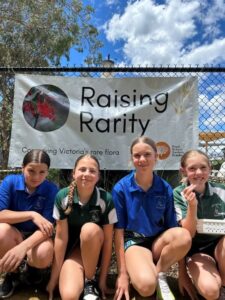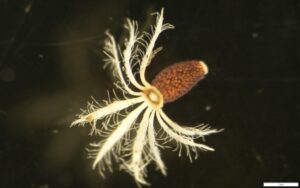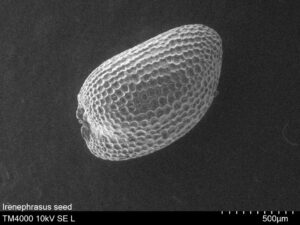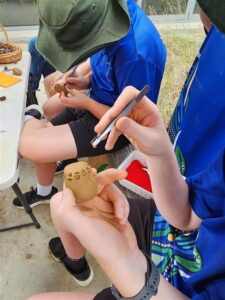
Raising Rarity: sowing the seeds of wonder
By Dr. Megan Hirst
Seeds can be overlooked next to floral displays, but we can truly appreciate their hidden beauty under magnification. Seeds allow plants to move through space and time, and with this, a sense of wonder.
For some species, their seed has the amazing ability to lie dormant for tens to hundreds of years, providing insurance against the extinction of plants in the wild. However, plants are under threat all around us as their habitats are lost or degraded. More than 85% of Australian plants occur nowhere else in the world (Kearney et al., 2018). Of these endemic species, 1,425 are listed as at risk of extinction, an alarming indicator of the health of Australia’s biodiversity. We need to acknowledge that the children of present and future generations will bear the cost of climate change and, therefore, must be involved in current decision-making through climate literacy education.

Raising Rarity is a school outreach program that embeds conservation education and action into a hands-on approach. The program has recruited students to grow and care for a threatened plant species that occurs (or did so historically) within proximity to their school. This Raising Rarity-school partnership begins with students attending a Conservation Workshop, hosted at the Royal Botanic Gardens Victoria (RBGV). Here, the students are introduced to the taxonomy and ecology of the threatened species they will grow and care for. Students take this knowledge and plant their rare species into raised plots at their school with the help of the Raising Rarity team. The monitoring phase begins with recording phenological stages, soil pH and moisture levels. These actions are informative for their plots’ health, if irrigation is required, and learning how their species behaves under cultivation. Through careful monitoring, the students harvest seeds from their plots and ensure their safe passage to the Victorian Conservation Seedbank.

Each year, we celebrate each student’s achievements with a Celebration Day, held at a botanic garden. The program has grown from six schools in 2024 to ten in 2025, and now we have sixteen schools participating in 2026. We work with social science educators from Monash University to assess student engagement and awareness, and to develop tools in climate literacy education.
Through active and meaningful participation coupled with climate-ready education, the Raising Rarity school outreach program aims to increase student botanical knowledge and the applied skills to grow and monitor plant health, and contribute to our understanding of growing and caring for plants at risk.

Acknowledgements
Meg would like to thank the RBGV Raising Rarity School Outreach team, Ben Liu, Tash van Velzen and Matthew Henderson, and colleagues Dr Rosie Welch and Prof Alan Reid of the School of Curriculum Teaching and Inclusive Education, Monash University, Victoria. Thanks also to Sale Botanic Gardens colleagues and Wellington Shire education officer Sharon Ray for all her amazing work assisting us with the 2024 Celebration Day at Sale Botanic Gardens.
Reference
Kearney, S.G., Carwardine, J., Reside, A.E., Fisher, D.O., Maron, M., Doherty, T.S., Legge, S., Silcock, J., Woinarski, J.C.Z., Garnett, S.T., Wintle, B.A., Watson, J.E.M. (2018), The threats to Australia’s imperiled species and implications for a national conservation response, Pacific Conservation Biology, https://doi.org/10.1071/PC18024
